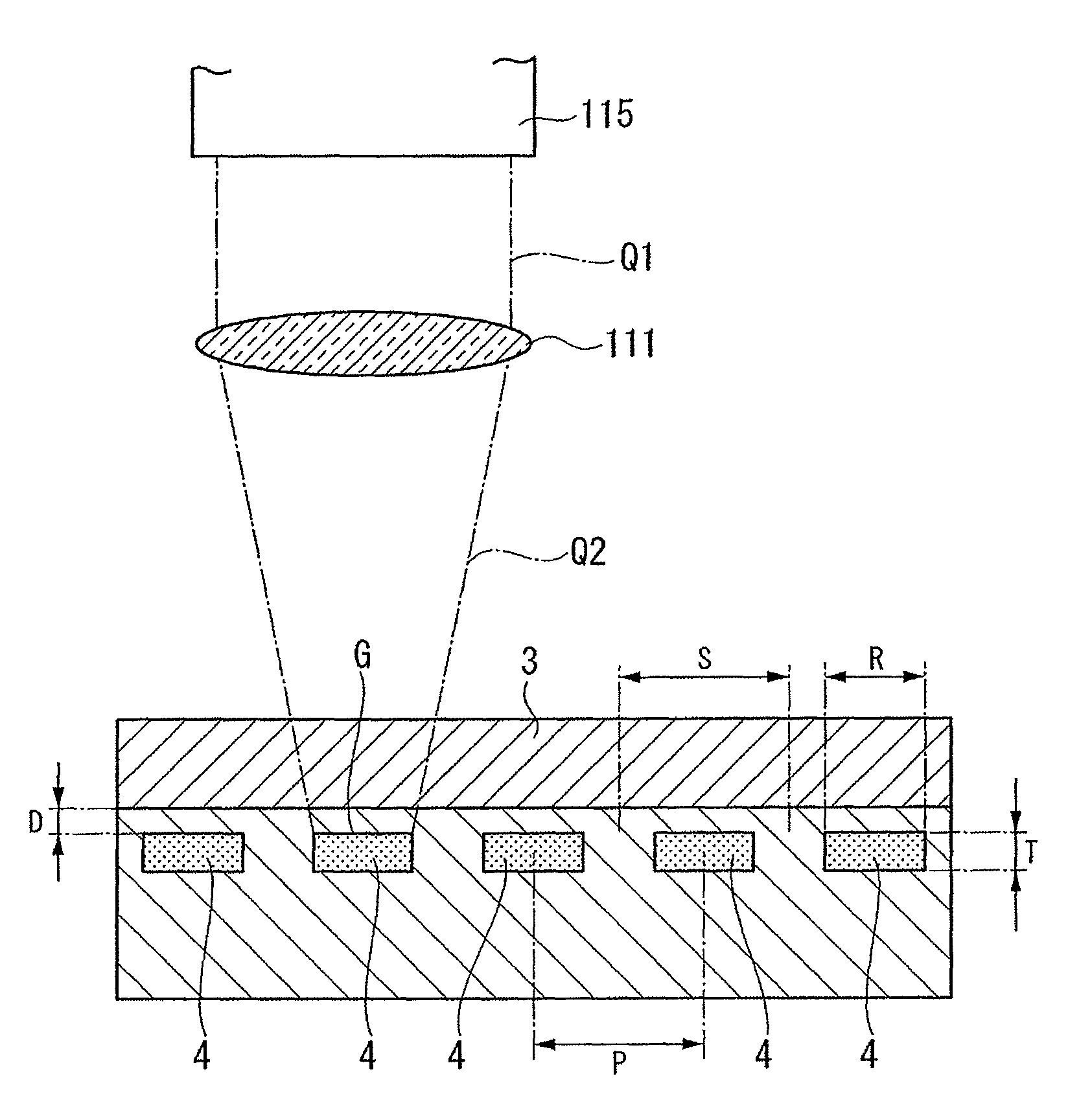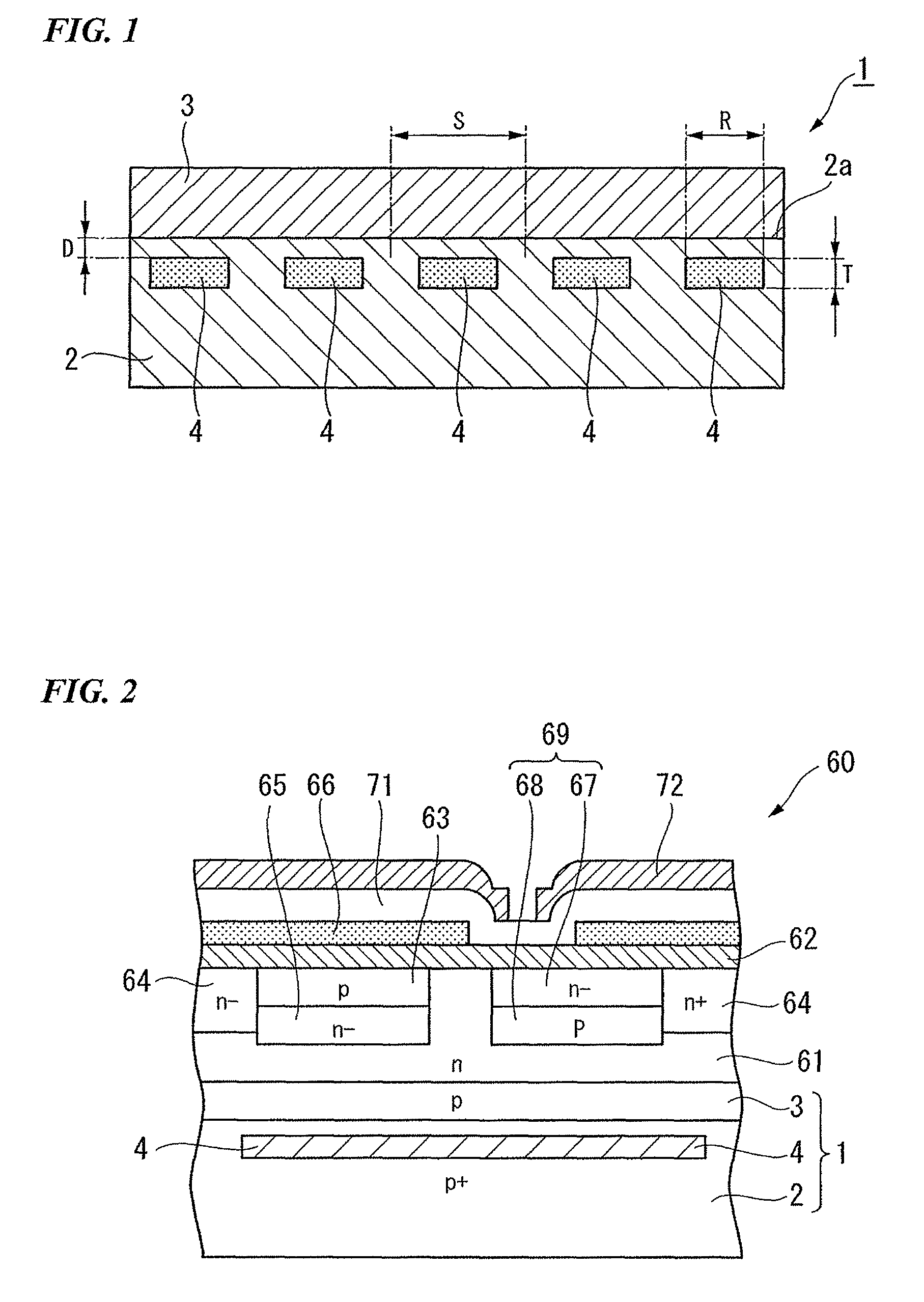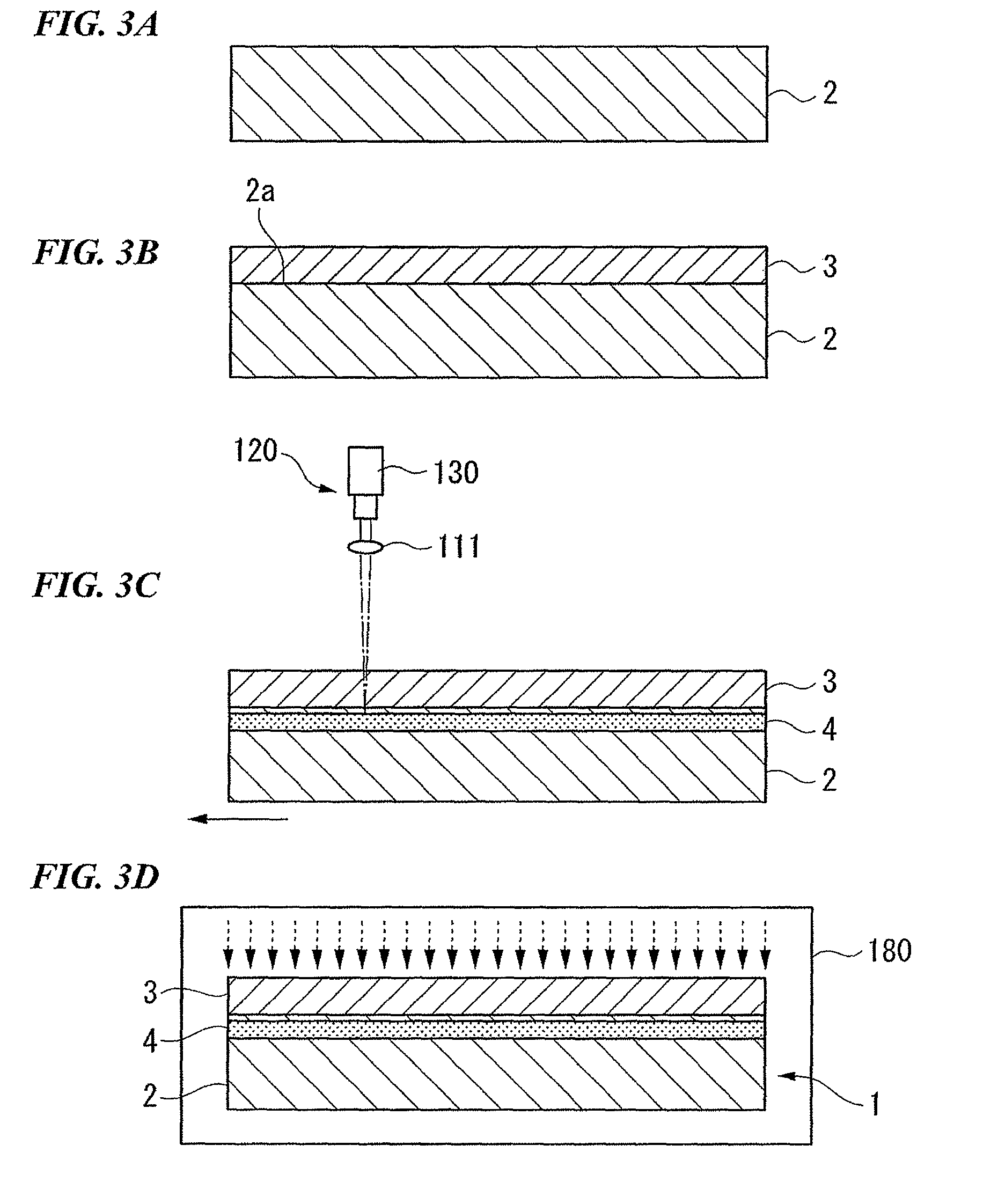Method and apparatus for manufacturing semiconductor substrate dedicated to semiconductor device, and method and apparatus for manufacturing semiconductor device
a semiconductor substrate and manufacturing method technology, applied in the direction of laser beam welding apparatus, manufacturing tools, welding/soldering/cutting articles, etc., can solve the problems of hardly obtaining sufficient gettering capability, and unable to meet the requirements of high-performance semiconductor devices. , to achieve the effect of suppressing the generation and extension of crystal dislocation, facilitating the formation of gettering sink, and reducing the generation of crystal dis
- Summary
- Abstract
- Description
- Claims
- Application Information
AI Technical Summary
Benefits of technology
Problems solved by technology
Method used
Image
Examples
second embodiment
[0169]As described above, according to the present invention, the irradiation position of the condensing point (focal point) G of the laser beam Q2 obtained by converging the laser beam Q1 is set in any micro-region inside the single crystal wafer 2. It is possible to form the gettering sink 4 in any micro-region of the single crystal wafer 2 by reforming the crystal structure of such a micro-region.
[0170]In the laser beam for forming the gettering sinks 4, it is important to set a condition capable of reliably transmitting the laser beam without reforming the crystal structure of the epitaxial layer 3 or the single crystal wafer 2 in the optical path before the laser beam arrives at the condensing point (focal point). Such an irradiation condition of the laser beam is determined by a forbidden band (an energy band gap) which is a basic material property of the semiconductor material. For example, since the forbidden band of a silicon semiconductor is 1.1 eV, when the incident wavel...
third embodiment
[0194]FIG. 14 is a schematic diagram illustrating an apparatus for manufacturing a semiconductor device according the present invention, i.e., an example of a laser irradiation apparatus for forming a gettering sink on a semiconductor wafer. The laser irradiation apparatus (an apparatus for manufacturing a semiconductor device) 320 has a laser irradiator 321 for irradiating laser beams onto the semiconductor substrate 1 along a plurality of optical axes C parallel with one another from the irradiation surface 321a.
[0195]The laser irradiator 321 is formed, for example, in an approximately disc shape having an approximately circular bottom surface greater than or equal to the single crystal wafer 2. Along the irradiation surface 321a facing the single crystal wafer 2, a plurality of laser sources such as laser diodes 315 are provided.
[0196]As shown in FIG. 15, the laser diodes 315 are regularly arranged to be spread over an approximately circular irradiation surface 321a. The positio...
PUM
| Property | Measurement | Unit |
|---|---|---|
| temperature | aaaaa | aaaaa |
| wavelength | aaaaa | aaaaa |
| diameter | aaaaa | aaaaa |
Abstract
Description
Claims
Application Information
 Login to View More
Login to View More - R&D
- Intellectual Property
- Life Sciences
- Materials
- Tech Scout
- Unparalleled Data Quality
- Higher Quality Content
- 60% Fewer Hallucinations
Browse by: Latest US Patents, China's latest patents, Technical Efficacy Thesaurus, Application Domain, Technology Topic, Popular Technical Reports.
© 2025 PatSnap. All rights reserved.Legal|Privacy policy|Modern Slavery Act Transparency Statement|Sitemap|About US| Contact US: help@patsnap.com



